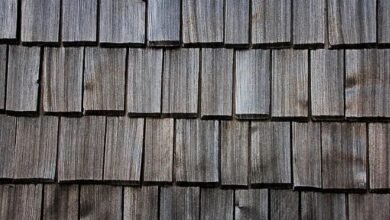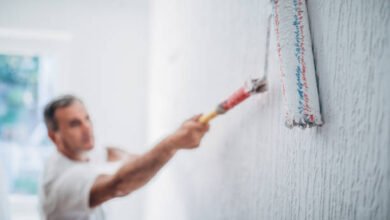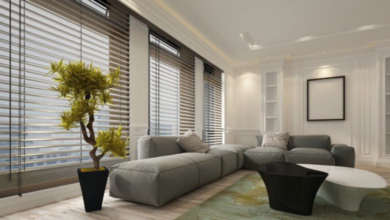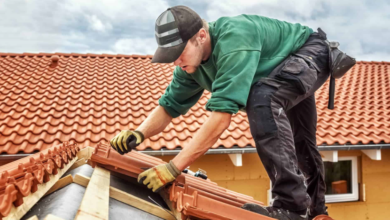Coloured Concrete Costs Explained: Factors, Estimates, and Long-Term Value
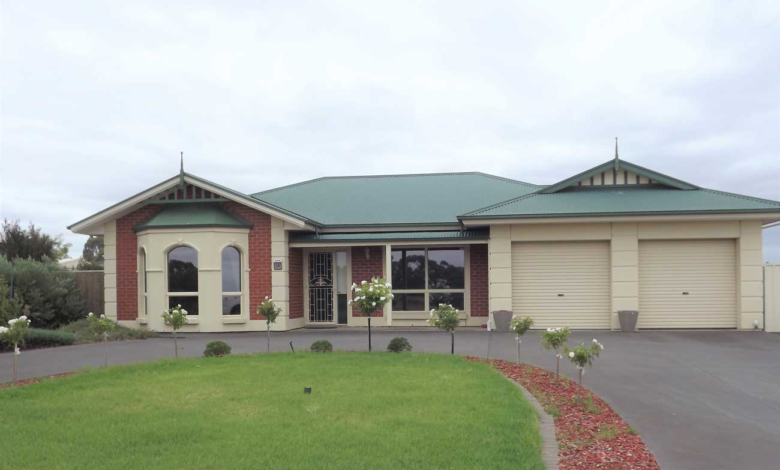
Coloured concrete has become one of the most popular options for both residential and commercial projects. It combines the durability and strength of traditional concrete with the versatility of colours, patterns, and textures. From driveways and patios to flooring, landscaping, and commercial plazas, coloured concrete transforms ordinary grey surfaces into visually appealing features. However, one of the first questions property owners and designers ask is about coloured concrete cost.
Understanding the factors that influence pricing, average cost ranges, and the long-term value of coloured concrete can help you plan your project effectively. In this guide, we will explore everything you need to know about coloured concrete costs, including material types, installation methods, maintenance considerations, and tips for budgeting without compromising quality.
What is Coloured Concrete?
Coloured concrete is a decorative variation of standard concrete in which pigments or dyes are used to achieve a desired hue or pattern. Unlike standard grey concrete, which is plain and uniform, coloured concrete offers a range of colours, from natural earthy tones to vibrant, bold shades.
The colouring process can be achieved in several ways, including mixing pigments directly into the concrete (integral colouring), applying stains or dyes after the concrete is set, or using surface treatments such as dry shake hardeners or coloured sealers. Each method impacts the final look, durability, and cost of the project.
One of the main advantages of coloured concrete is that it does not compromise the structural integrity of the material. It retains all the strength, durability, and versatility of traditional concrete while providing a visually appealing finish.
See also: Tips for Getting Your Home Ready for the Market
Factors That Affect Coloured Concrete Cost
The cost of coloured concrete varies depending on multiple factors. Understanding these variables can help you estimate a realistic budget for your project.
Material Costs
The type of pigment or dye used significantly affects the overall cost. Integral pigments mixed into the concrete before pouring tend to be more expensive than surface-applied stains. Premium or specialty pigments, such as metallic powders or vibrant colours, can further increase material costs.
The base concrete itself also contributes to the overall expense. Higher-grade mixes that provide enhanced strength and durability are more costly than standard concrete. Additionally, thicker slabs or larger pours naturally require more material, increasing the total cost.
Application Method
The way coloured concrete is applied impacts both labour and material expenses. Integral colouring involves thorough mixing and careful pouring to ensure uniform colour throughout the slab. Surface staining or dyeing is less labour-intensive but may require sealing and maintenance to preserve colour over time.
Specialized techniques like stamped patterns, polishing, or dry shake hardeners involve additional materials and skilled labour, which can significantly increase costs. The more intricate the design, the higher the price.
Preparation and Substrate Work
Proper site preparation is crucial for a long-lasting and visually appealing finish. Preparing the base, excavating the area, installing reinforcement, and leveling the surface all contribute to costs. Projects with uneven terrain, existing structures, or large areas require additional labour and materials, which increases the overall expense.
Finishing and Detailing
The finish of coloured concrete influences its aesthetic appeal and durability. Smooth finishes, polished surfaces, stamped patterns, or etched designs require more time and skill to complete. Adding sealers or protective coatings also adds to the total cost but helps maintain the colour and longevity of the surface.
Geographic Location and Accessibility
Labour rates, material availability, and regional market conditions affect coloured concrete cost. Projects in urban areas may have lower transportation costs but higher labour rates. Remote or difficult-to-access sites may incur additional charges due to logistics and equipment requirements.
Average Cost of Coloured Concrete
Coloured concrete costs vary based on the factors mentioned above. On average, you can expect the following price ranges:
- Basic coloured concrete: $8 to $15 per square foot. This includes simple integral pigmentation or single-colour stains. It is suitable for small patios, pathways, and driveways.
- Medium-grade coloured concrete: $15 to $25 per square foot. This range covers projects with textures, patterns, or multiple colours. It is commonly used for residential patios, decorative floors, and garden features.
- High-end coloured concrete: $25 to $40 per square foot or more. This includes stamped, polished, or metallic finishes with complex designs. It is ideal for commercial spaces, lobbies, large-scale outdoor areas, or luxury residential projects.
These prices generally include both materials and labour but may not cover extensive preparation, excavation, or decorative accessories such as edging, borders, or embedded features.
Comparing Coloured Concrete with Other Materials
When considering coloured concrete, it’s important to understand how it compares to alternative paving and decorative options.
- Standard Grey Concrete: Plain concrete is cheaper, averaging $4 to $8 per square foot. However, it lacks the aesthetic appeal and design versatility of coloured concrete. Over time, it may also require more maintenance if cracks or stains appear.
- Natural Stone: Stone paving can cost $15 to $50 per square foot depending on the type of stone and installation complexity. Coloured concrete offers a similar visual appeal at a lower cost and with greater durability and ease of installation.
- Brick Pavers: Bricks can range from $10 to $30 per square foot. While bricks provide a classic look, installation is labour-intensive, and shifting or weeds can create long-term maintenance issues. Coloured concrete provides a seamless, low-maintenance alternative.
- Tiles: Decorative tiles offer a wide range of designs but require precise installation, grout maintenance, and may not be suitable for outdoor high-traffic areas. Coloured concrete combines aesthetics with durability, making it ideal for many surfaces.
Overall, coloured concrete often represents the best balance between cost, longevity, and design flexibility.
Cost-Saving Strategies
While coloured concrete can be more expensive than plain concrete, there are ways to manage costs without compromising quality or aesthetics.
- Simplify Designs: Using a single colour or fewer design elements reduces both materials and labour. Single-tone integral colouring is more cost-effective than multi-colour blends.
- Limit High-Cost Finishes: Reserve stamping, polishing, or texturing for key areas instead of applying it across the entire surface. This creates visual impact while controlling expenses.
- Select Cost-Effective Pigments: Earthy tones or standard pigments are typically less expensive than specialty dyes or metallic finishes.
- Work with Experienced Contractors: Skilled professionals can optimize the mix, application, and finishing process to reduce waste, avoid mistakes, and ensure a high-quality result.
- Use Sealers Wisely: Sealers enhance colour longevity and protection but can be applied selectively or periodically to reduce initial costs.
Long-Term Value of Coloured Concrete
Investing in coloured concrete provides long-term benefits. Unlike decorative materials such as pavers, tiles, or wood, coloured concrete is highly durable and resistant to cracking, fading, or wear when installed correctly. This reduces future maintenance and replacement costs.
Additionally, coloured concrete enhances property aesthetics and curb appeal. Attractive surfaces like driveways, patios, and decorative floors can increase the perceived value of a property. In commercial projects, a visually appealing concrete surface can improve brand image and create an inviting environment for customers or clients.
Proper maintenance, including cleaning and occasional resealing, ensures that the colour remains vibrant and the surface retains its strength for decades. This makes coloured concrete a cost-effective investment over time, even if the initial outlay is higher than standard concrete.
Applications That Affect Cost
The application of coloured concrete can also influence overall pricing.
- Driveways and Walkways: Large surface areas require more material and preparation, which increases costs. Textured or stamped finishes add further expenses.
- Patios and Outdoor Living Spaces: Design complexity, multiple colours, and integration with landscaping features can affect pricing. Simple integral colour or single-tone stain is more economical.
- Indoor Flooring: Polished coloured concrete floors are popular for homes, offices, and commercial spaces. Polishing, dyeing, and sealing add to labour and material costs.
- Decorative Walls and Counters: Vertical surfaces or decorative elements may require more intricate techniques, such as staining, etching, or multiple layers of colour, which increases costs.
Factors to Consider When Budgeting
When planning a coloured concrete project, it is important to consider both the short-term and long-term costs. Include the following in your budget:
- Materials: Concrete mix, pigments, stains, dyes, sealers, and finishing products.
- Labour: Skilled contractors, preparation, finishing, and installation.
- Site Preparation: Excavation, base preparation, reinforcement, and grading.
- Maintenance: Cleaning, resealing, and occasional repairs.
Planning ahead and obtaining detailed quotes from multiple contractors can help ensure that your project stays within budget while meeting your design and quality expectations.
Conclusion
Coloured concrete is an excellent choice for anyone seeking a combination of durability, versatility, and aesthetic appeal. While it is more expensive than standard grey concrete, its benefits in terms of long-term value, low maintenance, and design possibilities often outweigh the initial cost.
Several factors influence coloured concrete cost, including materials, application methods, site preparation, finishing techniques, and geographic location. By understanding these variables and working with experienced contractors, property owners can make informed decisions and achieve high-quality results within their budget.
From simple patios and driveways to high-end polished floors and decorative commercial surfaces, coloured concrete transforms ordinary spaces into visually engaging environments. Its durability, longevity, and wide range of design options make it a worthwhile investment for both residential and commercial projects.
Whether you are considering a new driveway, patio, or interior floor, understanding coloured concrete cost is the first step in planning a successful project. With proper planning, material selection, and professional installation, coloured concrete can provide beauty, functionality, and value for decades to come.


